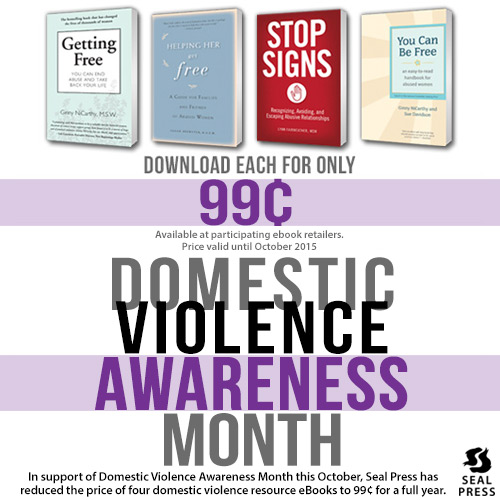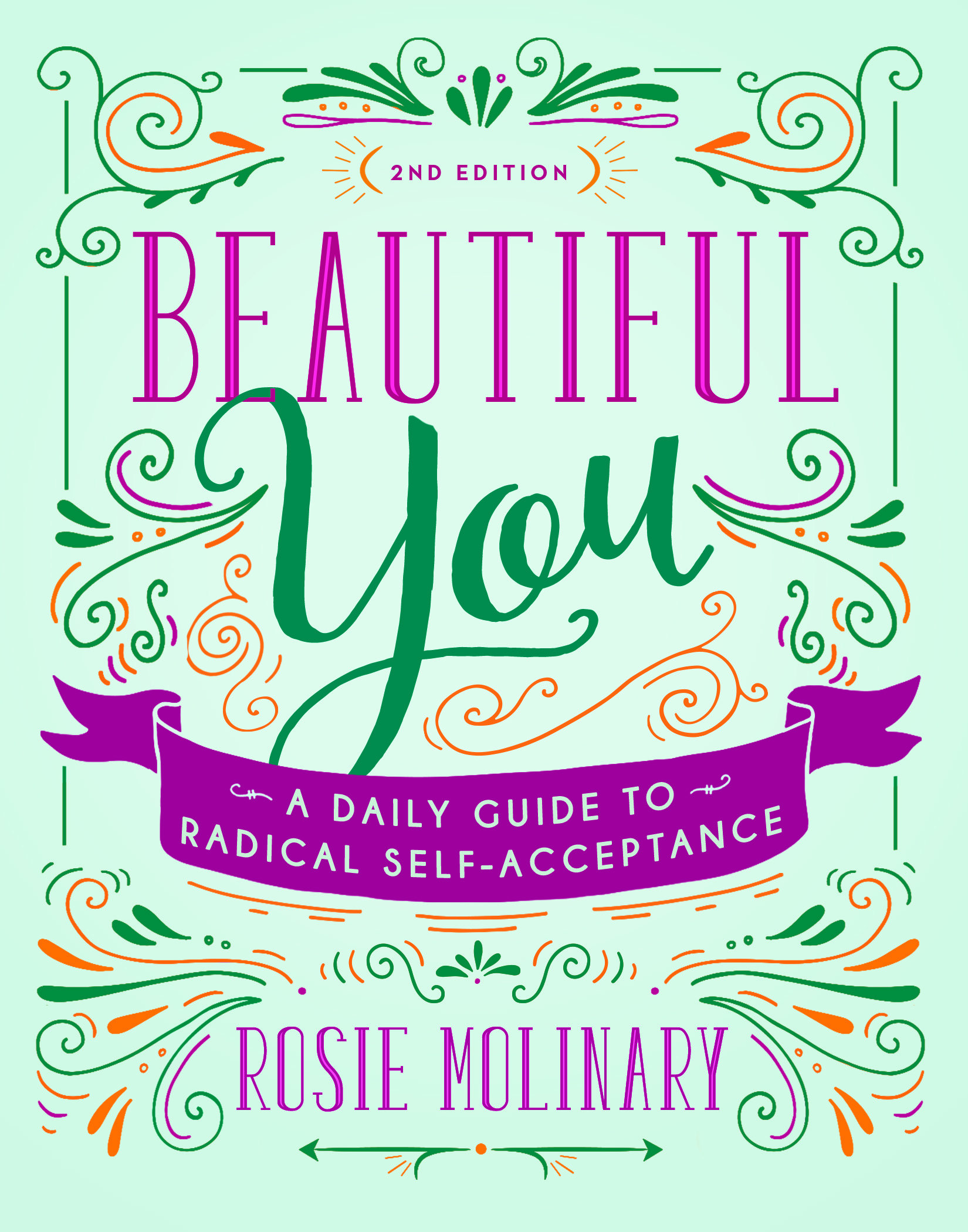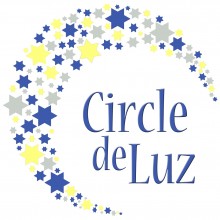As many of you know, I am a football fan and the recent cases of domestic violence among NFL players weigh heavily on my mind. I have a lot of thoughts that I am still sorting through about the role of professional sports and domestic violence, but I know unequivocally that we need to talk more about domestic violence and offer greater support so that every home may be a safe home.
In our country, here is the jarring reality:
One in four women (24.3 percent) and 1 in 7 men (13.8 percent) aged 18 and older in the United States has been the victim of severe physical violence by an intimate partner in their lifetime.
Intimate partner violence alone affects more than 12 million people each year.
In support of Domestic Violence Awareness Month this October, Seal Press (the publisher of my two books) has reduced the price of four domestic violence resource ebooks to $0.99 for a full year at participating ebook retailers: Getting Free, Stop Signs, Helping Her Get Free, and You Can Be Free. A dedicated e-reader device isn’t necessary to read the promoted ebooks; titles can be read on tablets and mobile phones using any reading app, many of which are free.
For those that may be living with abuse or know someone who is, Lynn Fairweather, MSW, author of Stop Signs: Recognizing, Avoiding, and Escaping Abusive Relationships (2012), offers these twelve pieces of advice.
1. Knowledge is power. When it comes to preventing domestic abuse, learning to recognize the distinct patterns and behaviors associated with intimate partner violence can be lifesaving. Most abusive partners choose, test, and prime their future victims before they ever lay a hand on them. Learn their tactics, watch for red flags, and always follow your instinct—it serves to protect and guide you in potentially dangerous situations.
2. Don’t compare. Abuse is abuse, even if you were assaulted but not physically injured, even if you hit back in self-defense, or even if it happened when there was alcohol involved. Abuse is not defined by the severity of injuries or by the number of police reports made. Avoid comparing your experience to that of other people, and instead ask: do you feel safe in your relationship?
3. You are worthy. Believing yourself to be valuable, capable, and deserving of happiness may help give you the strength to leave a relationship that turns out to be dangerous. When we recognize ourselves as worthy of a healthy, respectful love we can better identify the partnerships that do not reflect that right.
4. Don’t walk in unless you are willing to walk out. When searching for a romantic match, you must make up your mind beforehand that you are comfortable ending the relationship if your needs are not met. Decide early in the process that you will never be so attached to an outcome that you end up sacrificing your principles or your safety.
5. Jealousy can destroy. A Trojan horse of relationship abuse, jealousy may first feel like a welcome gift, displaying evidence of a lover’s strong feelings and his/her fear of losing you to another. But the possessiveness of an abusive individual is not about real love, but rather ownership and the assumption of impending betrayal.
6. Beware of isolation. One control tactic used to separate victims from supporters that might otherwise identify the abuse or assist the victim is isolation, which can be accomplished by physically moving the victim to a remote location, disabling their communication devices, or turning the victim against their connections.
7. Assess threats. When assessing verbal threats from an abuser, consider context, purpose, ability, and content. As a general rule, the more detailed the threat, the more likely it is to be followed through with. Remember, too, that the absence of threat does not equal safety.
8. Know if it’s high-risk. Some types of abuse are more highly correlated with intimate partner homicide than others. For example, strangulation, threats with weapons, and sexual abuse are all high-risk markers in a domestic violence situation. Use extra caution when exiting the relationship.
9. The abuser is not your responsibility. An abuser’s job is made far easier when his victim believes they can stop the downward spiral of violence by being a better partner, fixing the abuser’s many problems, or making excuses for his behavior. It’s not your responsibility to save a damaged partner.
10. Develop a safety plan. If you have decided to leave an abusive relationship, the most important thing to do is make a personalized safety plan with an experienced advocate. Leaving ushers in the most dangerous time for many victims of abuse, and exiting without preparation can increase the chances that you will have to return out of fear or economic necessity.
11. Use your resources. Understanding the roles of police, advocates, prosecutors, and judges can help prepare victims for the realities of working with the social service and criminal justice systems. A wide variety of resources exist to support people who are trying to escape domestic abuse, so identify and access your allies before making the final leap to safety.
12. Create an emotional safety plan. For many victims, leaving does not stop the abuse or the psychological pain that comes with it. Plan with a professional around how to stay safe after the relationship ends, and create an “emotional safety plan” that includes self-care goals and the support of close friends or an experienced therapist.
If you are in danger, please call 911 or reach the National Domestic Violence Hotline at 1-800-799-7233 or TTY 1-800-787-3224.



